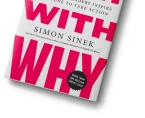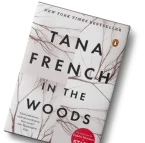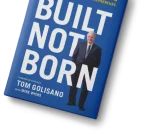
Have you ever noticed persistent details—like green light glowing across a river or relentless rainfall drenching a scene—that seem to echo through a story? Those aren’t coincidences—they’re motifs, and they add depth, meaning, and emotional resonance to literary works, films, art, and even your own writing. A motif is a recurring image, phrase, action, or sound that appears throughout a creative piece. It’s not just decoration—it tells its own story, signifying themes and creating connections, helping readers feel rather than simply understand.
In this detailed guide, we’ll explore what a motif is, how it differs from related literary elements like symbols and themes, and how to spot motifs in famous works—from Wuthering Heights and The Great Gatsby to Blade Runner and Van Gogh’s paintings. We’ll analyze motif examples, function in storytelling, and offer practical advice on creating motifs in your own writing, including prompts and checklists. By the end, you’ll not only understand motifs better—you’ll see how to use them to add depth and cohesion to your own work.
What Is a Motif?
A motif is a recurring element in a creative work—an object, concept, phrase, action, color, or pattern—that appears multiple times, often evolving in meaning as the story progresses. By drawing attention to these elements through repetition, authors build emotional weight, thematic cohesion, and narrative rhythm.
Core Characteristics of Motifs
- Repetition
The same detail appears again and again—each appearance adds a layer. - Variation in Context
Although the motif remains recognizable, its meaning shifts as situations change. - Emotional & Thematic Impact
Motifs are not random; they speak to central themes or character growth. - Reader Recognition
A motif usually sticks in memory, even subconsciously.
Craft Powerful Motifs in Your Own Story
Estorytellers helps you weave literary elements like motifs into books that captivate and connect.
Bring Your Book to LifeMotif vs. Symbol vs. Theme
Understanding motif exapmles often requires distinguishing them from similar literary elements:
- Theme: The underlying message or big idea of a work (e.g., love, redemption).
- Example: Pride and Prejudice explores marriage, reputation, and class.
- Example: Pride and Prejudice explores marriage, reputation, and class.
- Symbol: A specific object or image that represents a broader idea (e.g., a dove for peace).
- Example: In The Scarlet Letter, the scarlet “A” symbolizes adultery.
- Example: In The Scarlet Letter, the scarlet “A” symbolizes adultery.
- Motif: A beaten thematic drum—repetition of images, sounds, or objects to emphasize themes and emotions.
- Example: In The Great Gatsby, the green light motif evolves from longing to disillusionment.
- Example: In The Great Gatsby, the green light motif evolves from longing to disillusionment.
Motif = repetition, Symbol = one-time representation, Theme = broad concept.
Common Categories of Motifs with Examples
Here are motif examples frequently used across genres, art forms, and cultures.
1. Nature & Weather Motifs
Storms & Rain
- Wuthering Heights: Emily Brontë’s rugged Yorkshire moors and solstice storms mirror Catherine’s turbulent soul.
- Jane Eyre: Brontë’s other classic uses storms to herald passion, transformation, and liberation.
- Their Eyes Were Watching God: Hurston’s recurring hurricanes underscore Janie’s trials and spiritual resilience.
Practice: Add changing weather to reflect your protagonist’s emotions—calm before a storm, sunlight after resolution.
Seasons & Sunlight
- The Great Gatsby: A sweltering summer precipitates tragedy.
- To Kill a Mockingbird: Maycomb’s seasonal lag becomes a metaphor for societal stagnation—and hope’s arrival in June.
- One Hundred Years of Solitude: Marquez references a never-ending insomnia plague to comment on history’s repetitive and surreal nature.
Practice: Link seasonal change to character development—spring = hope, autumn = reflection, winter = death.
Use Literary Tools to Write Like a Pro
From motifs to themes, we help you write and publish stories that resonate deeply with readers.
Write with Depth at EstorytellersGardens & Flowers
- The Secret Garden: Frances Hodgson Burnett’s garden becomes a symbol of healing and self-discovery.
- The Bell Jar: Plath uses flowers that wither, symbolizing mental illness’s internal decline.
- A Thousand Splendid Suns: Hosseini uses gardens to manifest freedom or captivity in Afghanistan.
Practice: Pick one plant or flower to symbolize an internal change and revisit it in key scenes.
2. Light & Darkness Motifs
Light
- Frankenstein: Victor’s “spark of life” in his experiment juxtaposes hopeful creation with tragic consequences.
- Rebecca: du Maurier emphasizes natural light when truth is revealed and darkness when deceit grows.
- Beloved: Toni Morrison uses brightness to punctuate the appearance of literal and spiritual ghosts.
Practice: Use light sources (sunrise, candle flame, screen glare) to map emotional awakening or danger.
Shadows & Darkness
- Heart of Darkness: Conrad’s jungle darkness critiques colonial evil and self-deception.
- Rebecca: Mrs. Danvers appears in darkness, reinforcing her haunting presence.
- 1984: Orwell’s Big Brother monitors from oppressive 24/7 shadows.
Practice: Reflect hidden secrets or suppressed emotions through recurring darkness or shadow.
3. Objects & Symbols in Repetition
Mirrors & Reflections
- Picture of Dorian Gray: The portrait aging in private while Dorian remains physically pristine reveals internal corruption.
- Alice Through the Looking Glass: Mirror becomes a portal into the surreal and self-reflection.
Practice: Have a character confront themselves in a window or mirror repeatedly, noticing emotional or moral cracks.
Doors & Thresholds
- Handmaid’s Tale: Locked doors and windows signal control and defiance in Gilead.
- Chronicles of Narnia: The wardrobe is a literal passage from mundane to magical.
- The Woman in Black: Leadenly closed doors echo psychological entrapment and secrecy.
Practice: Use motif examples, entering or leaving spaces to mark transitions in your characters’ arcs.
Clocks & Timepieces
- Mrs. Dalloway: Big Ben’s chimes ground the story in time’s relentless march.
- The Great Gatsby: Gatsby’s mansion is empty yet frozen in time.
- Time’s Arrow by Martin Amis: reverse chronology narrative uses time reversal as a motif to explore memory and redemption.
Practice: Let clocks chime when emotional shifts occur or time pressure builds.
Great Stories Start with Strong Motifs
At Estorytellers, we help you structure and refine your book with professional storytelling support.
Write a Stronger Book With Us4. Animal & Movement Motifs
Birds
- Mockingjay bird in Mockingjay (Hunger Games): Represents hope and rebellion.
- Mockingbird in To Kill a Mockingbird: Symbol of innocence harmed by evil.
- The Kite Runner: Kites and birds echo freedom and redemption.
Practice: Let birds appear at symbolic moments—fleeing when tension spikes, singing in safety.
Journeys & Roads
- Odyssey: Multiple literal and metaphorical voyages define identity.
- Grapes of Wrath: Road West becomes a channel for hope and displacement.
- On the Road: Kerouac’s journeys define counterculture and search for freedom.
Practice: Use movement—walking, commuting, crossing liminal spaces—to reflect narrative motion.
5. Colors, Music & Language Motifs
Colors
- Green in Gatsby: Hope, wealth, corruption, loss layered into a single hue.
- Yellow in Beloved: Tagging the horror and sweetness of memory captured in stamp-machine ink.
- Blue in The Bluest Eye: Morrison shows why internalizing whiteness was aspirational and destructive.
Practice: Choose one color that emotionally resonates with your story and weave it into descriptions and dialogue.
Music & Songs
- The Great Gatsby: The “Gatsby’s Party” theme song represents glitter and emptiness.
- Ninth House by Leigh Bardugo: Repeating the invocation song becomes a spiritual connection.
- Sing, Unburied, Sing: Williams uses “singing” to evoke ancestral voices and trauma.
Practice: Bring back a piece of music or phrase in different forms—replayed, reinterpreted, distorted.
Words & Repetition
- 1984: “Big Brother is watching” moves from poster to human chant.
- The Road: Repetition of “carry the fire” reinforces hope in bleakness.
- Beloved: “124 was spiteful” introduces a malignant house as an emotional motif.
Practice: Choose lines your characters repeat—angry outbursts, fragrant memory triggers, spiritual chants.
6. Human Body & Emotion Motif Examples
Blood & Injury
- Blood Meridian: blood smears power, reveals horror.
- The Handmaid’s Tale: Blood, babies, the Body’s sacral politics underscore control.
- Beloved: Blood connects physical harm to generational trauma.
Practice: Small bodily details—scratch, bruise, bleeding knee—can mirror emotional pain.
Touch & Connection
- Their Eyes Were Watching God: Janie uses touch to define herself.
- *The world of Atonement: Hand touching window surfaces points to longing and guilt.
- My Name is Lucy Barton: Reconnecting through touch softens trauma scars.
Practice: Describe a handshake that changes tone—first innocence, then betrayal—through the story.
Tell Stories That Stick—Like the Greats
We help writers structure books with the same emotional and literary power seen in classics and films.
Bring Your Vision to LifeMotif in Film, Art & Pop Culture
Motifs transcend literature. Notable motif examples:
Movies
- The Godfather: Oranges herald violence frequently.
- Blade Runner: Rain and gloss signal dystopia.
- Star Wars: Light sands and darkside lightning echo internal struggle.
Visual Art
- Van Gogh’s Sunflowers reflect abundance and decay.
- Picasso’s Cubist faces express fractured identity.
- Mondrian’s grid structures convey harmony within structure.
Music Videos
- Childish Gambino’s This is America: repeated gunshot silhouettes and dancing echo violence and autonomy.
- Adele’s Hello: broken phones and old letters evoke regret.
How to Analyze Motifs
- Catalogue all repetitions—phrases, visuals, images.
- Test Meaning Variations—how does each appearance shift?
- Connect to Character & Theme—does the motif reflect emotional arc?
- Emotional Notes—how did the motif make you feel each time?
Mini Analysis: The Great Gatsby
- Motif: Green light
1st seen: off-screen wealth and hope
Seen again: illusions built by Gatsby
Seen again: shimmer and heartbreak when whitewashing Daisy’s regret - What shifts?: From sparkle to sadness, from past to inevitability
- How it works: Nostalgia + disillusionment
Mini Analysis: Blade Runner
- Motif example: Rain, neon lights
- Shifts: Rain reflects replicants’ yearning. Neon flicker becomes aura of false utopia.
- Emotional beat: Atmosphere that’s as beautiful as it is horrifying.
Motifs Matter—So Should Your Message
Estorytellers helps you craft books with meaningful structure, vivid storytelling, and real impact.
Write a Book That LastsUsing Motifs in Your Writing
A six-step guide to adding motifs:
- Pick one object/image aligned with your theme.
- Introduce it early, casually.
- Repeat in key scenes—emotional pivot points.
- Let meaning shift—sometimes hopeful, sometimes threat.
- Use senses beyond sight: sound, smell, touch.
- Reflect internally—have characters comment on motif presence.
Practice Exercises:
- Write 500 words using only three motif appearances.
- Build a motif grid tracking its appearances and emotional context.
- Turn a minor repeated detail (a type of smell, phrase) into your story’s motif.
Conclusion
Motifs are the threads that weave through your story, connecting parts into a cohesive design. Whether it’s color, music, weather, or a repeated phrase, motifs turn surface events into something emotionally resonant and meaningful. They shape your narrative without screaming their presence—and that’s the power of good storytelling. Make your motifs sensory and meaningful, choose them consciously, and watch how they amplify your work.
With improved awareness of motif examples, you’ll find yourself reading more deeply—and writing more intentionally. If you want personal feedback on how motifs work (or don’t) in your writing, Estorytellers offers narrative coaching, editing, and story development—helping deepen your themes and sharpen your storytelling, one motif at a time.






























